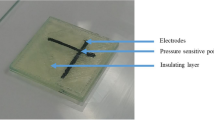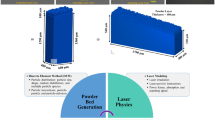Abstract
Additive manufacturing (AM) is considered as the standalone production house for customized parts of different varieties. AM has found applications in various industries including medical and aerospace for both prototyping and functional part fabrication. With rapid development in additive manufacturing technologies, the future of US manufacturing and economy clearly looks bright, process sustainability of such AM devices are not well studied. This paper addresses much needed sustainability aspects of additive manufacturing processes. More specifically, material wastage and energy consumption are two major concerns of the AM processes that requires immediate attention. In this research, process both at layer and part level enabling additive manufacturing process towards sustainability is formulated and optimized. Numerous real world examples are demonstrated and compared against conventional approaches to demonstrate the applicability of the developed approach. The models formulated here for selective laser sintering (SLS) process can be easily extended to other additive manufacturing technologies with little or no modification. Limitations of proposed research are also discussed.
Similar content being viewed by others
References
Hague R, Campbell I, Dickens P (2003) Implications on design of rapid manufacturing. Proc Inst Mech Eng C J Mech Eng Sci 217(1):25–30
Rosen DW (2007) Computer-aided design for additive manufacturing of cellular structures. Comput-Aided Des Appl 4(5):585–594
Taminger KM, Hafley RA (2003) Electron beam freeform fabrication: a rapid metal deposition process. In: Proceedings of the 3rd Annual Automotive Composites Conference, pp 9–10
Hague* R, Mansour S, Saleh N (2004) Material and design considerations for rapid manufacturing. Int J Prod Res 42(22):4691–4708
Venuvinod P, Ma W (2004) Rapid Prototyping: Laser-Based and Other Technologies. Optics (Kluwer). Springer
Kulkarni P, Marsan A, Dutta D (2000) A review of process planning techniques in layered manufacturing. Rapid Prototyp J 6(1):18–35
Verma AP (2009) Minimizing build time and surface inaccuracy of direct metal laser sintered parts: an artificial intelligence based optimization approach. PhD thesis, University of Cincinnati
Tyagi S, Ghorpade A, Karunakaran K, Tiwari M (2007) Optimal part orientation in layered manufacturing using evolutionary stickers-based dna algorithm. Virtual Phys Prototyp 2(1):3–19
Rock SJ, Wozny MJ (1992) Generating topological information from a bucket of facets. In: Solid freeform fabrication symposium proceedings. Citeseer, pp 251–259
Kirschman C, Jara-Almonte C, Bagchi A, Dooley R, Ogale A (1991) Computer aided design of support structures for stereolithographic components. In: Proceedings of the 1991 ASME Computers in Engineering Conference, Santa Clara, pp 443–448
Rajagopalan M, Aziz NM, Huey CO Jr (1995) A model for interfacing geometric modeling data with rapid prototyping systems. Adv Eng Softw 23(2):89–96
Navangul G, Paul R, Anand S (2013) Error minimization in layered manufacturing parts by stereolithography file modification using a vertex translation algorithm. J Manuf Sci Eng 135(3):031006–031006
Pandey P, Thrimurthulu K, Reddy* NV (2004) Optimal part deposition orientation in fdm by using a multicriteria genetic algorithm. Int J Prod Res 42(19):4069–4089
Thrimurthulu K, Pandey PM, Venkata Reddy N (2004) Optimum part deposition orientation in fused deposition modeling. Int J Mach Tools Manuf 44(6):585–594
Yang Z, Chen Y, Sze W (2002) Layer-based machining: recent development and support structure design. Proc Inst Mech Eng Part B J Eng Manuf 216(7):979–991
Paul B, Baskaran S (1996) Issues in fabricating manufacturing tooling using powder-based additive freeform fabrication. J Mater Process Technol 61(1):168–172
Kruth J-P, Mercelis P, Van Vaerenbergh J, Froyen L, Rombouts M (2005) Binding mechanisms in selective laser sintering and selective laser melting. Rapid Prototyp J 11(1):26–36
Sreenivasan R, Bourell D (2010) Sustainability study in selective laser sintering—an energy perspective
Paul R, Anand S (2012) Process energy analysis and optimization in selective laser sintering”. Journal of Manufacturing Systems
Mognol P, Lepicart D, Perry N (2006) Rapid prototyping: energy and environment in the spotlight. Rapid Prototyp J 12(1):26–34
Ruffo M, Tuck C, Hague R (2006) Cost estimation for rapid manufacturing-laser sintering production for low to medium volumes. Proc Inst Mech Eng Part B J Eng Manuf 220(9):1417–1427
Kellens K, Yasa E, Dewulf W, Duflou J (2010) Environmental assessment of selective laser melting and selective laser sintering. Going Green–CARE INNOVATION 2010: From Legal Compliance to Energy-efficient Products and Services
Atzeni E, Iuliano L, Minetola P, Salmi A (2010) Redesign and cost estimation of rapid manufactured plastic parts. Rapid Prototyp J 16(5):308–317
Nelson JC, Xue S, Barlow JW, Beaman JJ, Marcus HL, Bourell DL (1993) Model of the selective laser sintering of bisphenol-a polycarbonate. Ind Eng Chem Res 32(10):2305–2317
Childs T, Tontowi A (2001) Selective laser sintering of a crystalline and a glass-filled crystalline polymer: experiments and simulations. Proc Inst Mech Eng Part B J Eng Manuf 215(11):1481–1495
Childs T, Berzins M, Ryder G, Tontowi A (1999) Selective laser sintering of an amorphous polymer—simulations and experiments. Proc Inst Mech Eng Part B J Eng Manuf 213(4):333–349
Berry E, Brown J, Connell M, Craven C, Efford N, Radjenovic A, Smith M (1997) Preliminary experience with medical applications of rapid prototyping by selective laser sintering. Med Eng Phys 19(1):90–96
Sun M.-S. M. (1991) Physical modeling of the selective laser sintering process. PhD Thesis, University of Texas at Austin
Sun MSM, Beaman JJ, Barlow JW (1990) Parametric analysis of the selective laser sintering process. In: Proceedings of the First Solid Freeform Fabrication Symposium
Williams JD, Deckard CR (1998) Advances in modeling the effects of selected parameters on the sls process. Rapid Prototyp J 4(2):90–100
Fuh J, Choo Y, Nee A, Lu L, Lee K (1995) Improvement of the uv curing process for the laser lithography technique. Mater Des 16(1):23–32
Ning Y, Fuh J, Wong Y, Loh H (2004) An intelligent parameter selection system for the direct metal laser sintering process. Int J Prod Res 42(1):183–199
Cho H, Park W, Choi B, Leu MC (2000) Determining optimal parameters for stereolithography processes via genetic algorithm. J Manuf Syst 19(1):18–27
Campanelli S, Cardano G, Giannoccaro R, Ludovico A, Bohez EL (2007) Statistical analysis of the stereolithographic process to improve the accuracy. Comput Aided Des 39(1):80–86
Sabourin E, Houser SA, Bøhn JH (1997) Accurate exterior, fast interior layered manufacturing. Rapid Prototyp J 3(2):44–52
Mani K, Kulkarni P, Dutta D (1999) Region-based adaptive slicing. Comput Aided Des 31(5):317–333
Cormier D, Unnanon K, Sanii E (2000) Specifying non-uniform cusp heights as a potential aid for adaptive slicing. Rapid Prototyp J 6(3):204–212
Sabourin E, Houser SA, Bøhn JH (1996) Adaptive slicing using stepwise uniform refinement. Rapid Prototyp J 2(4):20–26
Tata K, Fadel G, Bagchi A, Aziz N (1998) Efficient slicing for layered manufacturing. Rapid Prototyp J 4(4):151–167
Tyberg J, Bøhn JH (1998) Local adaptive slicing. Rapid Prototyp J 4(3):118–127
Mohamed OA, Masood SH, Bhowmik JL (2015) Optimization of fused deposition modeling process parameters: a review of current research and future prospects. Adv Manuf 3(1):42–53
Padhye N, Deb K (2011) Multi-objective optimisation and multi-criteria decision making in sls using evolutionary approaches. Rapid Prototyp J 17(6):458–478
Phatak AM, Pande S (2012) Optimum part orientation in rapid prototyping using genetic algorithm. J Manuf Syst 31(4):395–402
Phatak A, Pande S (2016) Optimum strategies for hollowing and part orientation in additive manufacturing. Int J Precis Technol 6(1):61–77
Taufik M, Jain PK (2013) Role of build orientation in layered manufacturing: a review. Int J Manuf Technol Manag 27(1-3):47–73
Zhang Y, Bernard A, Gupta RK, Harik R, Campbell RI, Campbell RI (2016) Feature based building orientation optimization for additive manufacturing. Rapid Prototyp J 22(2)
Brooks S, Morgan B (1995) Optimization using simulated annealing. The Statistician:241–257
Goldberg DE, Holland JH (1988) Genetic algorithms and machine learning. Mach Learn 3(2):95–99
Prakash A, Shukla N, Shankar R, Tiwari MK (2007) Solving machine loading problem of fms: an artificial intelligence (ai) based random search optimization approach. In: Handbook of computational intelligence in manuf(1991) Physical modeling of thefacturing and production management, Idea Group Publishing, pp 19–43
Author information
Authors and Affiliations
Corresponding author
Rights and permissions
About this article
Cite this article
Verma, A., Rai, R. Sustainability-induced dual-level optimization of additive manufacturing process. Int J Adv Manuf Technol 88, 1945–1959 (2017). https://doi.org/10.1007/s00170-016-8905-9
Received:
Accepted:
Published:
Issue Date:
DOI: https://doi.org/10.1007/s00170-016-8905-9




